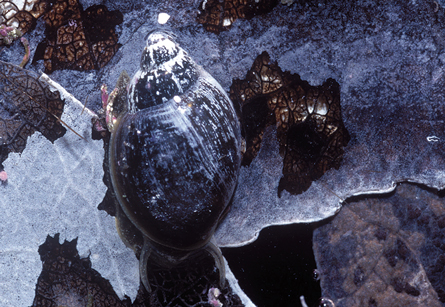Module 3 Intro
1. Module 3 Intro
1.19. Lesson 4 Intro
Module 3—Ecosystem Diversity
Lesson 4—Studying Organisms in Ecosystems: Biomes, Habitats, and Niches
 Get Focused
Get Focused

© Mark and Leslie Degner
On your next visit to Banff’s hot springs, look out for snails. Snails can be found in many different habitats, but these snails are unique. These snails are a different species than those you may find in Waterton Lakes National Park. How can that be? Isn’t a snail just a snail?
Different abiotic factors affect each park’s aquatic and terrestrial environments, creating different habitats for organisms in which to live. These different environments suit different species. Thermal springs are found in Banff National Park. This unique hot-water environment is the only place in the world where the Banff Springs Snail, Physella johnsoni, can be found. Unfortunately, this habitat is in danger, and the snail is on the endangered species list.
In this lesson you will explore the following essential questions:
- How do terrestrial and aquatic ecosystems support a diversity of organisms through a variety of habitats and niches?
- How do biotic and abiotic characteristics influence an aquatic and a terrestrial ecosystem?
 Module 3: Lesson 4 Assignment
Module 3: Lesson 4 Assignment
Your teacher-marked Module 3: Lesson 4 Assignment requires you to submit a response to the following:
- TR 1. Comparing Biomes and Niches Part A and B
- TR 2. Thought Lab 3.2: Forest Habitat and Bird Biodiversity
You can access your Module 3: Lesson 4 Assignment. You can print off the assignment or save the download to your computer. Your answers can be saved on this document in your course folder.
You must decide what to do with the questions that are not marked by the teacher.
Remember that these questions provide you with the practice and feedback that you need to successfully complete this course. You should respond to all the questions and place those answers in your course folder.